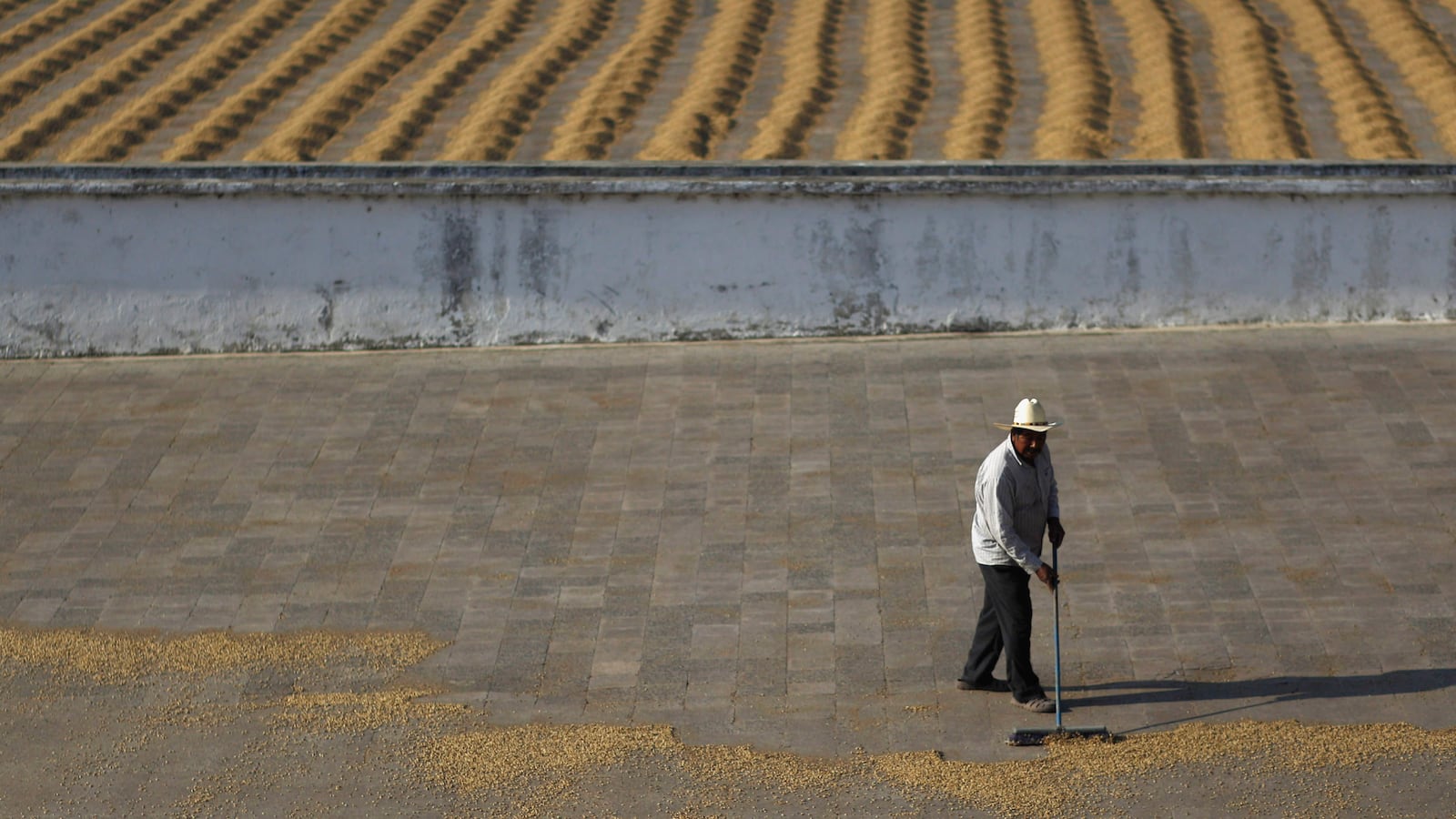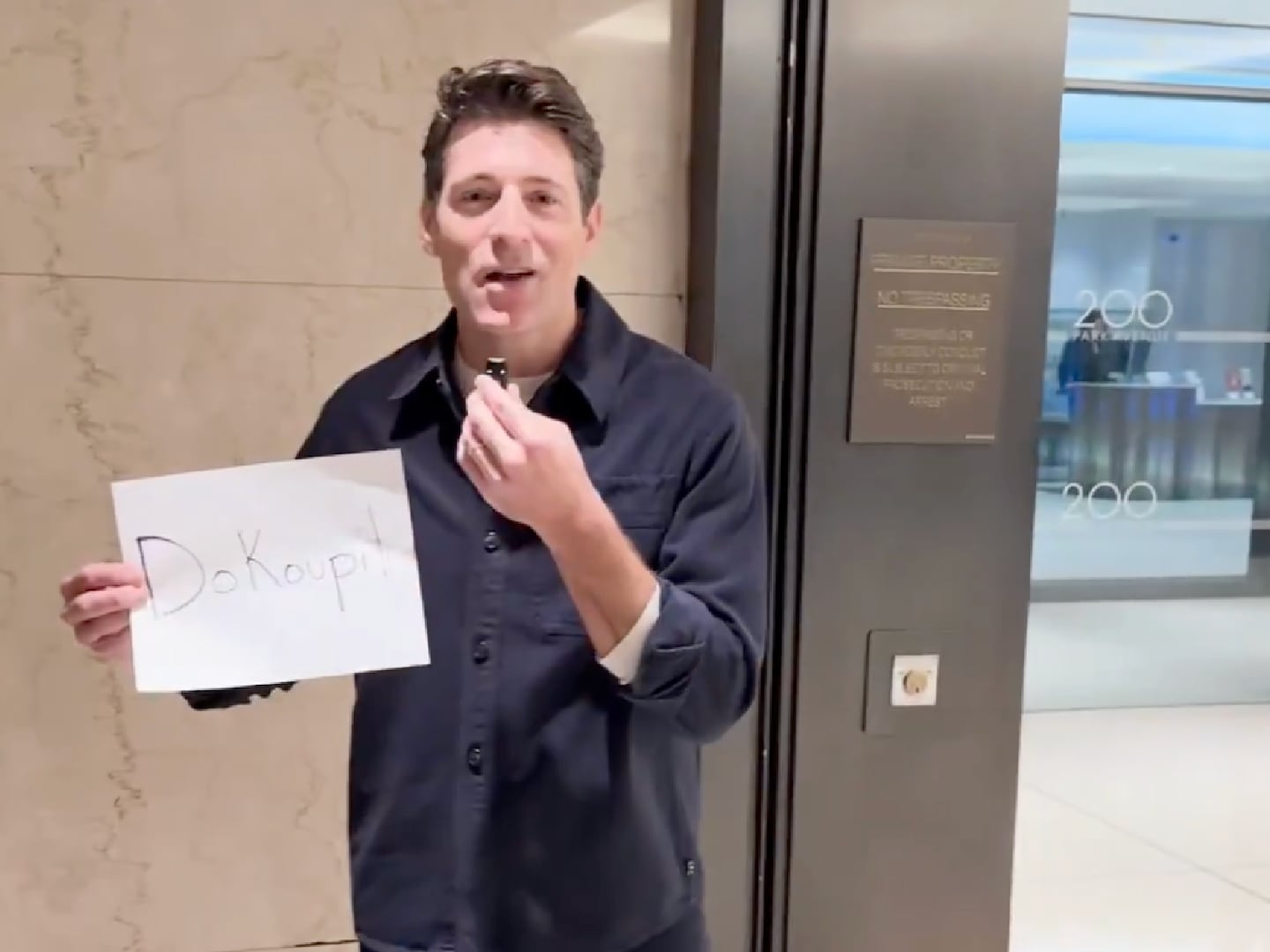One factor causing migrants to risk everything—even potentially losing their children—to travel through the heat of summer in the dangerous desert and towards the barbed wire fences and tent cities springing up just south of the United States border: climate change.
Many of the migrants being detained here now hail from what's referred variously as the Dry Corridor or the Northern Triangle, which consists of the three countries immediately south of Mexico: Guatemala, El Salvador, and Honduras.
The agricultural crisis of the Northern Triangle area isn't something that cropped up overnight, but has been in the making for more than a decade. The Food and Agricultural Organization of the United Nations published a report in June 2016 that described the depth of the food insecurity crisis in the region, leaving 3.5 million people, or nearly 30 percent of the population, food insecure from crop losses estimated to be as high as 90 percent.
Why the high crop losses? It’s due to a cycle of severe drought followed by tumultuous rainfall in the region, a pair of extreme weather patterns attributed to El Nino and La Nina.
Kicking off in 2015, this latest cycle of El Nino has twisted normal weather patterns in the region. By the next year, 2016, many in the Dry Corridor region reported at least two failed harvests as local weather patterns turned to La Nina, which is characterized by above-normal summer rainfall. That rainfall is made doubly dangerous when the Atlantic hurricane season—which has gotten more violent every year—dumps plenty of its own rainfall, making farming difficult, if not absolutely impossible.
"What we're talking about here are changing precipitation patterns," Robert Albro, a research associate professor in the Center for Latin American and Latino Studies at American University, said. "Climate scientists have observed that climate change is exacerbating El Nino and La Nina, so we see radically changing seasonal patterns."
Albro, who focuses on religion and climate change in the region, said that the notion that dumping enough rain to cause floods in the region might falsely lead outsiders to think that water is not an issue. But it actually is. "It's not predictable for farming," Albro explained. "There are more lengthier periods without rain dispersed with period of too much rain. In the periods without rain you get drought, and in the periods with intense rain, you get flooding."
That's not good for economies that rely on predictable seasons to be able to produce agriculture at a predictable rate. The weather, though, has been far from predictable, not only in the Northern Triangle area but also in surrounding regions. Albro pointed to last summer’s extremely active, destructive hurricane season last summer, when Hurricanes Irma and Maria brought death and devastation in the Caribbean. Those hurricanes did not pummel Guatemala, Honduras, and El Salvador, but just by nature of vicinity, they had a "definitely and immediate effect on Central America," Albro said.
And if a hurricane actually came and throttled the area this summer? Albro said 1998's Hurricane Mitch, which smashed into Honduras and caused tens of thousands of fatalities along with extensive infrastructure damage, could foretell the giant refugee crisis to come—hundreds of thousands of refugees traveled north from from Honduras to the United States in the aftermath of Mitch.
It doesn't help that locals are working on subsistence crops that are sensitive to temperature changes. "A lot of these crops are in a precarious region from where they were originally developed," Albro said.
The climate change narrative dispels the popular notion that many migrants from the Northern Triangle are escaping gang violence and rampant drug wars. "The dominant discourse about unaccompanied minor migration has almost entirely been attributed to violence in the region," Carrie Seay-Fleming, a graduate student in the department of sociology at the University of Colorado Boulder, said. "But there isn't a whole lot of evidence that violence is [driving migration]."
Grouping Guatemalans with El Salvadorans and Hondurans is one of the biggest problems here, Seay-Fleming said. Studies have shown that Guatemalans—who she said compose the majority of migrants at the border right now—cite economic distress much more than drugs and violence, which Hondurans and El Salvadorans are more likely to point to as the push for their migration (though still at equal rates to economic distress).
What's more, reports from international agencies like the United Nations consistently cite the fact that food insecurity from climate change-induced drought ultimately pushes migrants out of their homes and into other areas. Migrating becomes a “coping strategy,” according to the authors of a 2017 report on the area.
"There's reason to question the simplistic dialogue” that drugs and gang violence are what push Northern Triangle inhabitants out, Seay-Fleming said, pointing to figures that suggest gun violence and homicide rates in Guatemala are roughly equal to those of the United States.
The decision to migrate also comes down to age and gender. Unaccompanied minors who are older male adolescents tend to be split between economic distress and violence, but younger children and girls at the border are almost entirely motivated by family reunification.
"I'm not saying violence plays no role at all—it certainly does, at least in Honduras and El Salvador," Seay-Fleming said. "But we have to think of Guatemala differently. Guatemala has the highest poverty rate and the highest food insecurity. It's seeing rates of food insecurity that have never been seen before."
But while farming is the preferred way to make an income in the region, it’s not diversified. Coffee and maize are popular crops, Seay-Fleming said. The former is a cash crop that does exceptionally well on the world market; the latter is used primarily for subsistence. Neither likes to be too dry or too wet—and, importantly, neither compose a nutritious diet.
Maize, in particular, is sensitive to temperature changes, which is problematic given its role as a central, core food source. "With scarcity and unpredictable rain patterns, if you lose a maize crop in one year, your livelihood options are diminished," Seay-Fleming said. "These are small landholdings and very fragile livelihoods in unpredictable climates." If a crop fails, there's little else families can do to support themselves: schooling is limited, other trades are next to non-existent; and the only source of outside income is often remittances from a family member who lives abroad.
As people who live in the Northern Triangle have dealt with severe food insecurity over the last decade or so, families, desperate for cash and food, head to urban areas. These urban areas, in turn, become nightmarish, as families try to traverse not only a very different urban lifestyle but also the drug trade and gang violence that is often rampant in slums and within the city. That, in turn, often leads families to pack up and leave, first for perhaps another city, and when that doesn't work out, further north into another country—perhaps Mexico, then the United States.
"Job prospects [in the city] aren't great," Albro said. "There are social and economic hardships. It's really a set of stages that unfold in slow motion over years. We're really talking about a phenomenon where agricultural despair drives people from the countryside to cities."
That multi-stage movement north means that when it comes time to classify what type of migrants these families are, they aren't seen as climate change refugees. "They cite other problems," Albro points out, like the violence and economic despair. Almost always, climate change slips their mind, even though many of them can trace the initial reason why they move to that. "One of the difficulties is that environmental triggers are typically not included as factors for migrants," he added.
"It's not either/or," Seay-Fleming agreed. "The reality is that they [migrants] have mixed motives and people have multiple reasons for being expelled and forced to migrate."
Climate change's "invisible force," as Albro put it, means that we're solidly within the age of climate migration. In 2016, during the midst of the refugee crisis and European coasts swelling with boatloads of Syrians and other displaced people escaping war, climate change was cited as a reason for the influx of refugees in Mediterranean waters. A team of researchers published a paper in PNAS in 2015 that found the 2007-2010 drought in Syria was up to three times more likely because of climate change (and we all know what horror the subsequent years brought to the area).
That’s backed by a 2013 metastudy published in Science of 60 papers that found a correlation between more heat and more aggression and war. The reasons are at once simple and striking. On one hand, warmer temperatures are uncomfortable and irritating, straining tempers and patience. On the other hand, extreme weather is associated with climate change and uncertain crops, which make for economic uncertainty, spiked social tension, and “civil strife”: gang wars, domestic violence, demonstrations on the streets.
Ultimately, solving the current migrant crisis isn't as simple as saying "Don't grow coffee, grow another crop instead," Albro said. "It's a complex problem without an easy solution."
Northern Triangle expats often send back hefty remittances that help support local families and offset farming costs, and Albro thinks that social scientists would fare better to focus on how to improve those remittances and move them intelligently from family to local communities rather than try to figure out what crops actually work best.
Whether American borders are open or not, migrants are moving. "We're struggling with populist movements that push back against a permissive approach to migrants," Albro said. "But it's not just the politics that has paralyzed policy on this for at least a decade. There really are challenges in distinguishing between migrants versus refugees, environmental migrants versus those leaving because of conflict. The truth is that policy frameworks haven't adequately articulated these."
And that, ultimately, has led to the crisis we are dealing with today.
"We're seeing a new level of desperation," Seay-Fleming said. "When you might have seen an adult male leave before their family follows, you see, increasingly, entire families leaving in waves."






